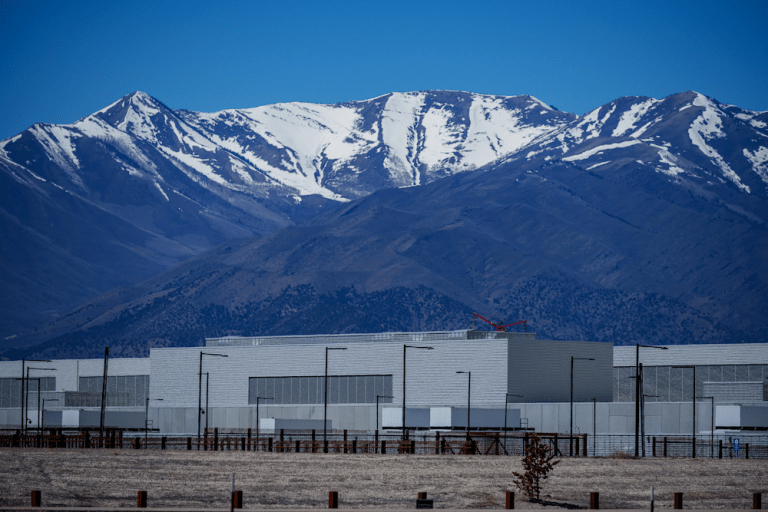To celebrate its 15th anniversary, the GreenMoney Journal asked leaders in the realms of green business and socially responsible investing to forecast 15 years into the future. How green will our economy be in 2022? GreenMoney’s anniversary issue features responses from Amy Domini of Domini Social Investments, Gary Hirshberg of Stonyfield Farm, futurist Hazel Henderson, and others.

Here, reprinted with permission, is a view from Mindy S. Lubber, president of Ceres, a leading coalition of investors, environmental groups, and other public-interest organizations working with companies to address sustainability challenges such as global climate change. Ceres also directs the Investor Network on Climate Risk, a network of more than 50 institutional investors collectively managing $4 trillion in assets. (Tune in later this week for a perspective from Joan Bavaria, president of Trillium Asset Management Company.)
If past is prologue, then to forecast where businesses will be in tackling environmental protection, humane labor practices, biodiversity, water supply, and other sustainability challenges, we have to look back.
Fifteen years ago, when the GreenMoney Journal was launched, a relative handful of niche companies such as Ben & Jerry’s, Timberland, and Tom’s of Maine were integrating the social consciences of their founders and even, in some cases, their spiritual values, into the capitalist model. But these companies were far outside the mainstream of American corporate culture, throwbacks to the idealism of the 1960s, and represented a tiny fraction of American corporate power.
Indeed, for decades there had been strong and pervasive resistance in the corporate world to environmental responsibility, transparency, and sustainable business practices. Such corporate values were seen as the province of the “tree-hugger” fringe and the notion that this could ever change was widely dismissed as a pipe dream.
Fast-forward 15 years to a single week in May 2007. Citigroup, one of the world’s largest financial conglomerates, announces that it will commit $50 billion over 10 years on investments and project financing to reduce global carbon emissions, including development of alternative energy and clean technologies. News Corp., one of the word’s largest media companies, led by the ultraconservative Rupert Murdoch, announces that it will become carbon “neutral” by 2010. And IBM, the venerable computer giant, announces it is spending $1 billion to become more energy efficient across its global operations. All in a single week! In each case, these decisions were driven by bottom-line economics and a recognition that sustainability is a core business issue.
These three corporate giants are part of a stampede by major corporations to go green. Dozens of Fortune 500 companies — Alcoa, SunMicrosystems, BP America, and Pacific Gas & Electric among them — have urged federal legislation to cap or reduce U.S. carbon emissions and have made substantial investments to improve their environmental performance. General Mills and Wal-Mart are reducing the size of their packaging, thus saving large quantities of raw materials and the energy required to process them. Dell is tripling its recycling of electronic products and supporting federal legislation to mandate recycling of electronic products.
Indeed, hundreds of companies have spent billions of dollars to understand and reduce their impacts on biodiversity, water quality, energy use, and climate risks. In one especially remarkable instance, the board of American Electric Power, a major producer of coal-fired energy, has made it clear that Mike Morris, the company’s CEO, will be held accountable for delivering on AEP’s commitments to integrate carbon capture and sequestration technology, addressing environmental health and safety issues with its coal suppliers, and preparing the company to thrive in a carbon-constrained economy. What happened at AEP is a model for a process that must become standard operating procedure. Senior management, including the CEO, board members, investors, and company critics hammered out a comprehensive set of sustainability goals for the company. It was then approved by shareholders and adopted as part of the company’s strategic plan.
Investors, too, are helping to shift the tide toward greater corporate transparency and accountability on a variety of sustainability challenges. It would have been inconceivable 15 years ago that in 2007, 55 of the nation’s largest institutional investors representing $4 trillion in assets would become part of Ceres’ Investor Network on Climate Risk, scrutinizing how the companies they invest in are managing the financial risks and opportunities of climate change. Climate change is the mother of all sustainability issues and will have an impact on every economic sector, whether from new regulations, physical impacts, or growing demand for climate-friendly technologies. Thus, climate risk is embedded in every business and investment portfolio, which is why more Wall Street analysts are beginning to factor corporate response to climate risk into their evaluations of the companies they cover.
Who would have imagined 15 years ago that more than 1,200 corporations would sign on to the Global Reporting Initiative (GRI), the gold standard of corporate sustainability reporting, so that outside stakeholders could evaluate, using a standard set of metrics, corporate performance on a range of sustainability challenges, metrics that management can also use to set specific sustainability goals and measure their progress?
As the evidence for climate change has mounted dramatically, more and more corporate boards have started to take the issue seriously, ensuring that management, often focused on quarterly results, take a long range view of how climate change could affect the bottom line. Ceres, in partnership with Yale University and insurance giant Marsh, launched a Sustainable Governance Program in June to help more corporate directors become more proactive in discussing climate change and other sustainability issues within their corporations.
In short, corporate concern about sustainable business practices, once taken seriously by a handful of prescient companies, is hitting both Wall Street and Main Street. Clearly, some corporations joining the movement to go green are doing so because they see a market trend and don’t want to miss the wave. Others see a public relations opportunity, while still others have leadership who genuinely see corporate responsibility and sustainability as integral to the corporate strategy. Whatever the motivation, the trend is a welcome one, for regardless of how they get there, in time most will see that enlightened self-interest means that sustainability, primarily managing the risks and opportunities of climate change, is a bottom-line economic and competitiveness issue they ignore at their peril. As organizations like Ceres gain a foothold in corporate America, however, we have to hold corporate feet to the fire and ensure that organizations such as Ceres and GRI continue to set the standards by which responsible corporate behavior is measured or we may well have won only a Pyrrhic victory.
I take heart that in the past 15 years sustainability issues have entered the conversation in corporations across the country and the world, and that many of the world’s leading companies are, quite literally, putting their money where their mouths are. There is today a critical mass of corporate and investor power that has made sustainability, principally climate change, a mainstream, high-priority political and corporate governance issue.
We are trending in the right direction, but it is far too early to declare victory. We have started to move the mountain, but just barely, and it remains to be seen whether we are moving fast enough to avert environmental and economic disaster. Of the 1,200 companies reporting under the GRI, less than 20 percent are U.S. companies. The major corporations calling for federal legislation to curb greenhouse gas emissions are still in the minority, and many, such as ExxonMobil, Southern, and Dominion Resources, have failed to set goals to reduce their own greenhouse-gas emissions or invested sufficiently in products and technologies that will reduce carbon emissions. Most boards of directors remain disengaged on sustainability issues. And though it appears we have reached a public-opinion tipping point on the need for aggressive action to counter global warming, in the United States, China, and virtually every other country, carbon emissions are still growing.
The growing corporate consensus on the need for action is a necessary, though not sufficient, condition for success, and rhetorical commitment to sustainability must be translated into measurable goals and results. Neither the private sector nor government alone can bring about change on the scale needed to ensure a prosperous future. In my view, governments, companies, and consumers all have essential roles in achieving a sustainable planet.
And we must be clear that what we are seeking is lasting prosperity, a goal that speaks to every citizen, stakeholder, and corporate leader. Too often sustainability issues are presented as either/or propositions. We can have clean air, but only at a loss of jobs. We can cut greenhouse-gas emissions, but only at a huge hit to the corporate bottom line. These are false choices. It is becoming increasingly clear, even in the most conservative corporate boardrooms, that the imperatives of the environmental and economic bottom lines are one and the same. DuPont, for example, has saved billions of dollars over the past decade by reducing energy use and greenhouse-gas emissions.
In short, what we are asking of the corporate world is this: engage with a wide range of stakeholders to examine impacts and find solutions, disclose your exposure to climate and other sustainability risks, and act. It is not enough to do one of these; they are an inseparable package.
If we are to create lasting prosperity by 2022, sustainability reporting must become as routine as corporate financial reporting. Indeed, it should become an integral part of such reporting, and sustainability strategies must become more than an adjunct or afterthought, or relegated to the PR department. They must become an integral part of every major company’s core mission and strategic plan. Fundamentally, environmental and social issues are business issues. They cannot be compartmentalized either philosophically or in terms of corporate management. They must be fully integrated throughout a company. A company that does not know how to integrate issues of sustainability into its long-term business strategy is a poorly run company and the investment community will take notice.
By 2022, will corporate America have risen to the challenge? It has taken many years to achieve the level of corporate engagement in environmental and social issues we have today. But it will take enormous commitment by corporate leaders, NGOs, local, state, and federal governments, investors, and other stakeholders if sustainability is to be recognized as the core economic issue that it is. There is strong momentum in this direction and for more and more companies to incorporate the values of sustainability into their corporate DNA. The stakes are high. Our future prosperity, indeed the survivability of our planet, may well depend on it.
This article was originally published on GreenMoney.com as part of its special 15th anniversary “Visionaries” issue. For more information, go to GreenMoney.com.



